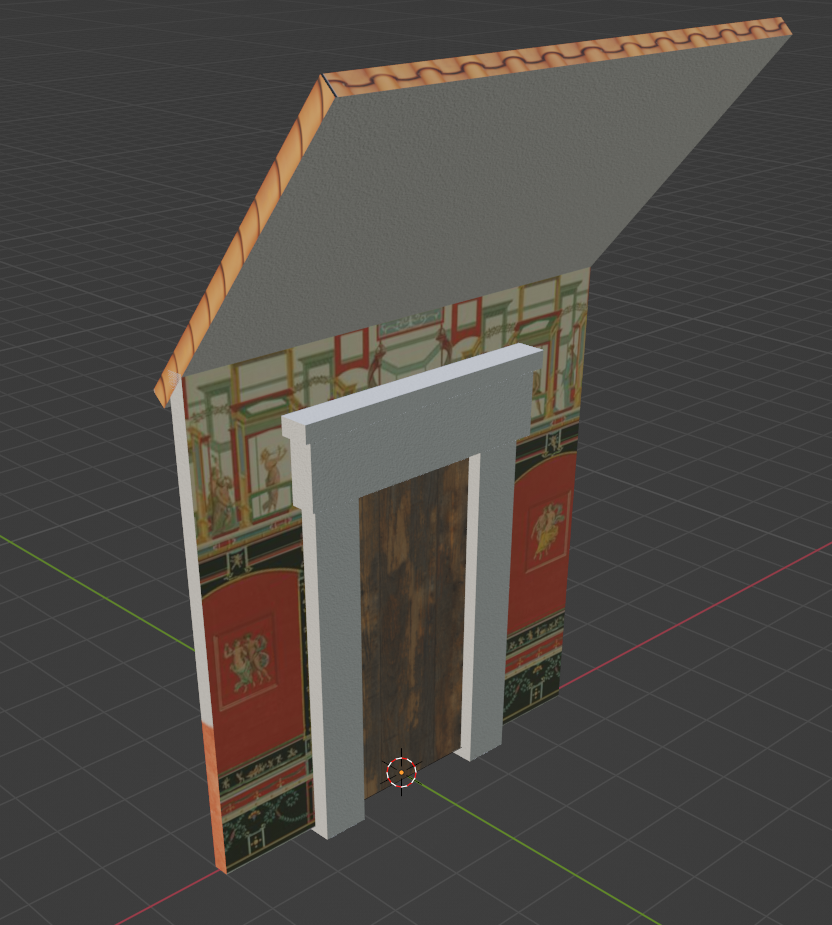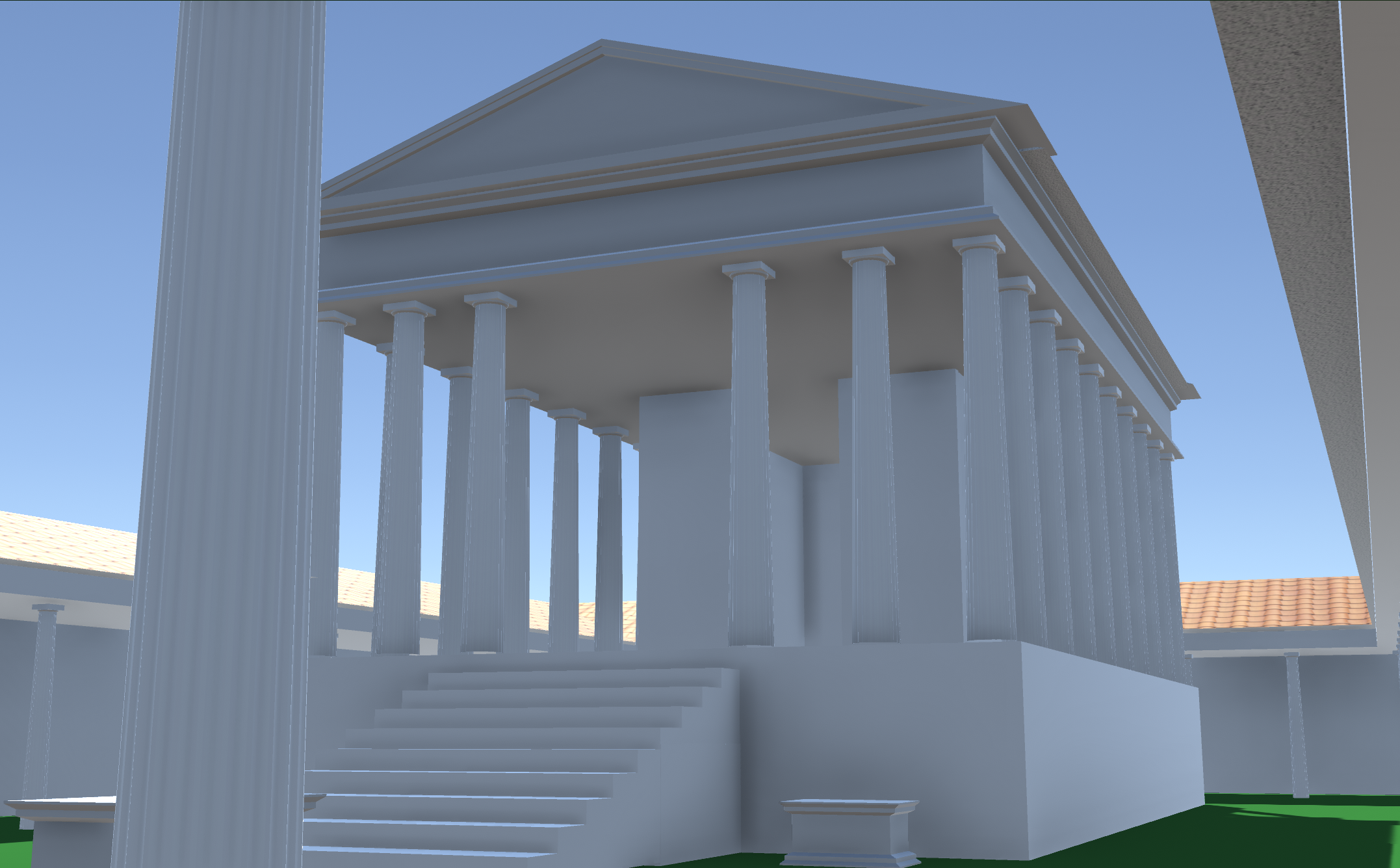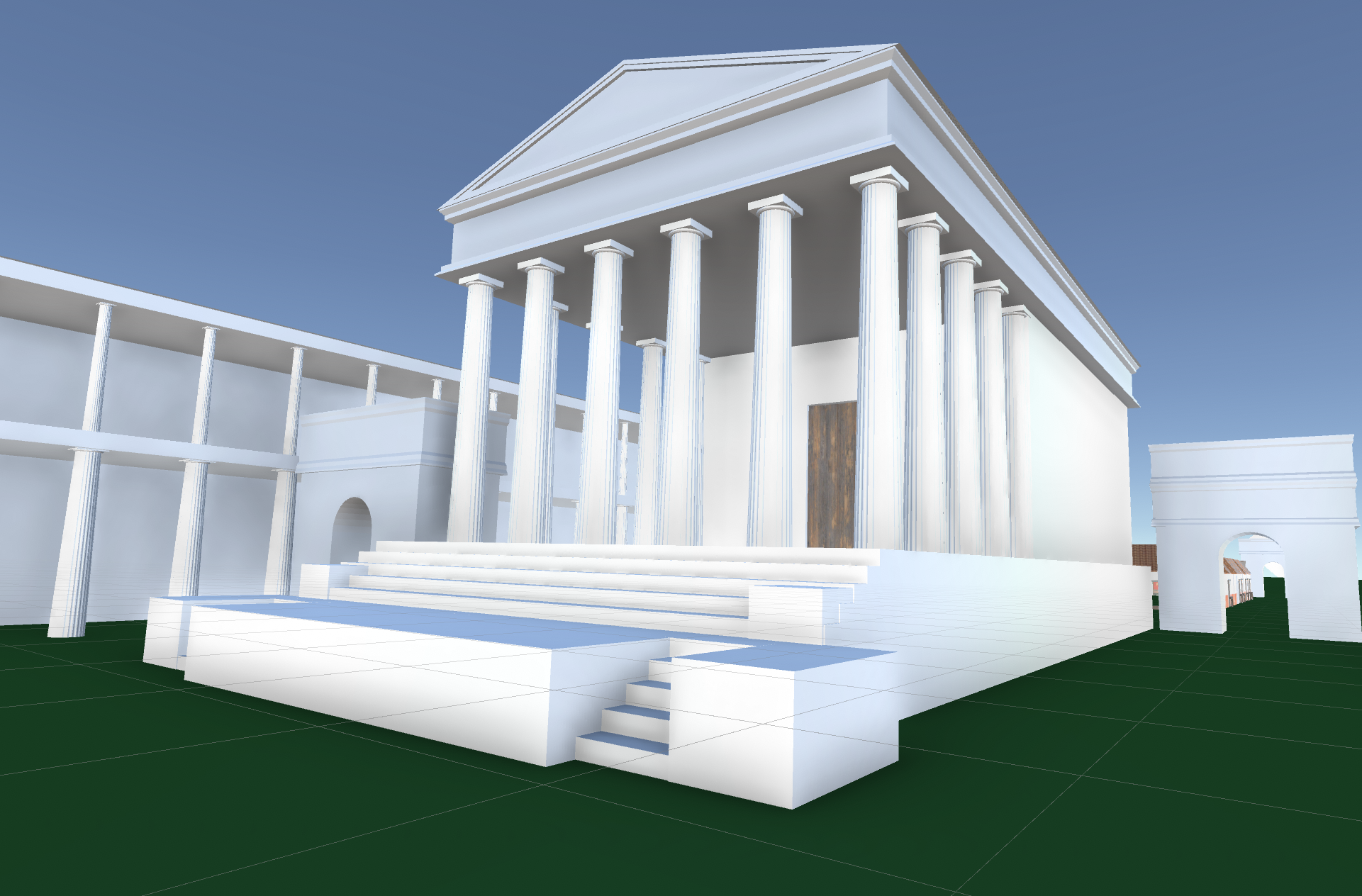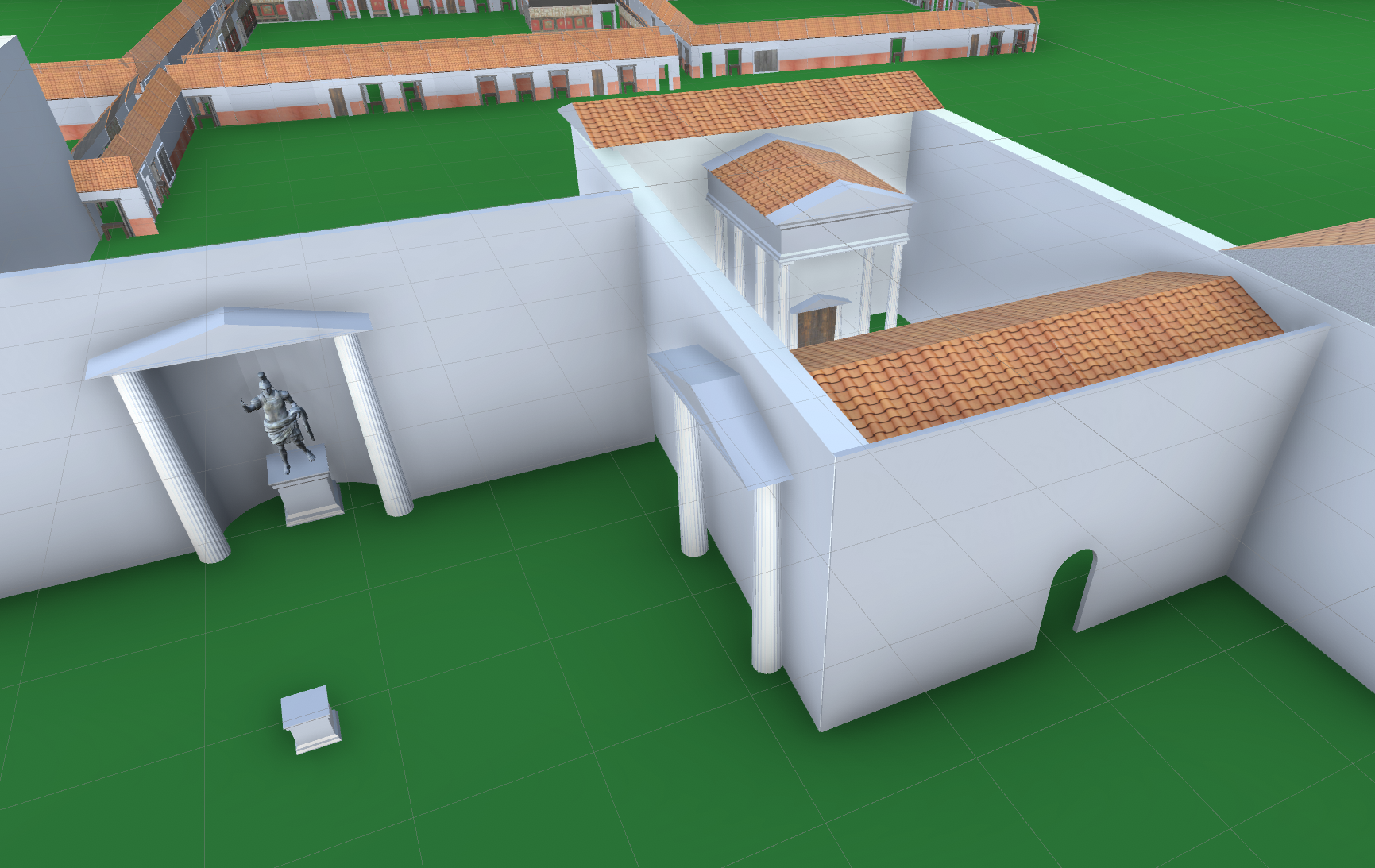Last week, I decided to start over from scratch on my Pompeii game project. One of the reasons I did so was because of how much learning I’d done the first time around and felt there were some efficiencies that could be had by scrapping the various pieces of ‘skill debt’ I’d accumulated. I was more correct than I thought.
I started by laying down my map and verifying it was the proper scale. It may not quite be as accurate as last time–maybe–but the maximum variance I calculated was 1.3% too small. Which, given that it’s supposed to be for a game is probably fine. I want to give the impression of the city’s size; one percent isn’t going to meaningfully impact that impression.
 Then I retextured all of my models in Blender. This time, however, I knew how many models I had that essentially used the same textures, and knew more about texturing. First, I went through all the highly common textures and made sure that either I had made them, bought them, or could verify that they were licensed as free to use for commercial projects. (More recent realization: I had been looking specifically for Creative Commons “CC0” license, which is essentially public domain, but I’ve expanded to “CC-BY” which has a lot more options and requires only giving credit, which I usually overdo anyway.)
Then I retextured all of my models in Blender. This time, however, I knew how many models I had that essentially used the same textures, and knew more about texturing. First, I went through all the highly common textures and made sure that either I had made them, bought them, or could verify that they were licensed as free to use for commercial projects. (More recent realization: I had been looking specifically for Creative Commons “CC0” license, which is essentially public domain, but I’ve expanded to “CC-BY” which has a lot more options and requires only giving credit, which I usually overdo anyway.)
Once I had all my texture images made, improved, or had the rights sorted, I combined them into one square image, pulled that into Blender, named a material something slightly more generic, and then appended that material into all of my models. This meant that when pulled into Unity, it would only make one texture and one material. Previously, every face of every shape had been a separate texture and model. That cleaned up a ton of duplication that existed in the old project. Well, after I used my fancy new texture to retexture everything I’d modeled.
 I’d also picked up other Blender tricks in the meantime, and a little architectural terminology, so I was able to improve my Doric column a little, made some improvements to a plinth (used with statues and in Ionic and Corinthian columns but typically not Doric), made some stairs, added a little detail to the pediment prefab, and to the entablature to clearly differentiate the architrave, frieze, and cornice, and built a set of stairs. I also made a textured single and double roof prefab in Blender that I think will save time in the long run at the loss of a small amount of flexibility over my previous roofing method.
I’d also picked up other Blender tricks in the meantime, and a little architectural terminology, so I was able to improve my Doric column a little, made some improvements to a plinth (used with statues and in Ionic and Corinthian columns but typically not Doric), made some stairs, added a little detail to the pediment prefab, and to the entablature to clearly differentiate the architrave, frieze, and cornice, and built a set of stairs. I also made a textured single and double roof prefab in Blender that I think will save time in the long run at the loss of a small amount of flexibility over my previous roofing method.
 These improvements made rebuilding the Temple of Jupiter and the first run at building the Temple of Apollo (a) faster, (b) more unique and historically accurate than the resized “ancient temple” model I had, and (c) looks much better. I do wish, though, that Unity had a way of making its rectangular prism (“cube”) into something trapezoidal, given that not everything is at 90 degree angles in this city. The entablatures were also useful in adding a little detail to my previous “block with arched doorway” model to be a reasonable approximation of a triumphal arch.
These improvements made rebuilding the Temple of Jupiter and the first run at building the Temple of Apollo (a) faster, (b) more unique and historically accurate than the resized “ancient temple” model I had, and (c) looks much better. I do wish, though, that Unity had a way of making its rectangular prism (“cube”) into something trapezoidal, given that not everything is at 90 degree angles in this city. The entablatures were also useful in adding a little detail to my previous “block with arched doorway” model to be a reasonable approximation of a triumphal arch.
 This gave me a taste for making more custom pieces in Blender. For example, the Sanctuary of the Public Lares has a very large half-barrel shaped nook in the back wall, and the Temple of Mercury has kind of a small door in a very large screening wall which doesn’t work well by scaling a regular door piece.
This gave me a taste for making more custom pieces in Blender. For example, the Sanctuary of the Public Lares has a very large half-barrel shaped nook in the back wall, and the Temple of Mercury has kind of a small door in a very large screening wall which doesn’t work well by scaling a regular door piece.
At this point, I’ve basically redone the last month’s worth of work in about three days, done it more efficiently and effectively, and set myself up to do the rest of the city with greater detail and less memory usage. Region 7 (the forum and surrounding neighborhood) is basically roughed out–at least at a “low poly” kind of level of detail. Enough that there are various places to go, enough streets to get a little bit lost in at first, places where shopkeeper NPCs can stand, and it’s all reasonably historically accurate. The doorways may not be exactly where doorways really were, but the approximate ratio of shops, homes, workshops, and blank wall is correct, for example.
I will definitely be using more Blender in the coming weeks (my best friend noted I’d mentioned Blender so often that he referred to my project as my “Pompeii smoothie”), but I think it’s time to shift to a little bit of coding–specifically setting up my NPCs. The forum isn’t really a forum without people conducting business, right?
